Retail Week visited Amazon’s MQY1 fulfilment centre in Nashville, Tennessee, to find the technology and retail giant is showing no signs of slowing down in its pursuit of innovative new technologies.
An annual US event, Amazon’s Delivering the Future offers journalists from near and far insights into the latest tech and advancements the retail behemoth is making to improve the employee and customer experience.
While the latest event didn’t feature any updates on its intriguing yet somewhat chilling humanoid robot Digit, it was packed with news on grocery, delivery, AI and robotics, and finished with a tour of the MQY1 facility.
So, what’s next in Amazon’s tech journey? And how can its work in the US transform the rest of its operations?
Next-generation facility
A tour around the Nashville site showed how Amazon’s operations flow from picking, packing, sorting and delivering to the customer – but this was just a snippet of what can be achieved.
Amazon’s most advanced fulfilment centre spanning 3 million sq ft in Shreveport, Louisiana, was unveiled, offering advanced AI and ten times more robotics to bring “years of innovation under one roof”.
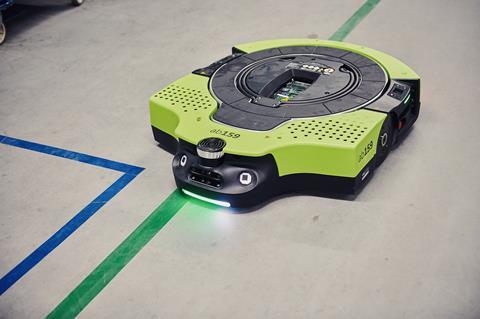
Amazon Robotics director Julie Mitchell said having all this tech in one place has “lowered delivery times by 25% and improved efficiency by 25%”, as well as improved staff safety.
One of the features of the new Shreveport facility was displayed on a tour of MQY1, as Amazon’s first fully autonomous mobile robot Proteus was spotted sweeping across the floor to carry packages of up to 880 lbs (400kg) to the outbound dock.
Proteus moves seamlessly around the facility floor and can detect and avoid obstacles; its blinking eyes even give you a sharp side-stare if you happen to get in its way.
It makes noises to alert humans that it’s making its way through the site, and is designed to be both “cute” and work collaboratively with staff, rather than being fenced off from employees like some of Amazon’s earlier robotic creations.
When asked if we can expect Proteus and other advanced tech in the Shreveport site to be deployed globally, Mitchell said Amazon is “working on timelines now”.
“Our idea is we learn once, fix, iterate, then scale really big. It’ll be a few years of hitting our entire network, so we’re taking it building by building.”
The question of whether robots will replace humans did crop up multiple times during the event, but Amazon has said it expects headcount to “continue to grow” and that it is “excited by how this technology also creates more opportunities for skilled jobs”.
An Amazon blog post highlighted that its next-generation fulfilment centres will need “25% more employees in reliability, maintenance and engineering roles”, but it may take a while to see this growth outside of the US.
AI expansion
Always a hot topic with Amazon, AI is being deployed in numerous ways across the business.
New shopping guides use generative AI (GenAI) to simplify the product research process and produce personalised, relevant recommendations on more than 100 product types including TVs and running shoes to help shoppers make informed decisions.
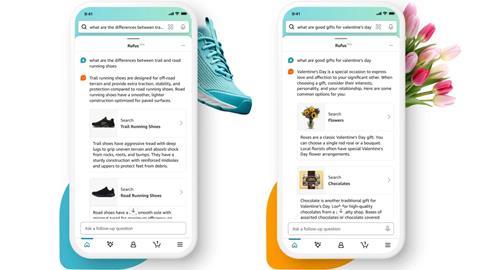
The guide is being rolled out to all US customers initially, but with the introduction of the GenAI-powered chatbot Rufus in the UK last month, we could soon see this new tool revolutionise the shopping experience elsewhere.
Meanwhile, across logistics, Amazon will deploy 1,000 electric delivery vans with vision-assisted package retrieval (VAPR) by early 2025 to make the delivery process easier for drivers.
The AI-powered VAPR will light up packages with a green “O” to alert the driver that this parcel should be delivered at the stop, while a red “X” will pop up on packages not expected to be delivered.
Early trials conducted by the team demonstrated a 67% reduction in “perceived physical and mental effort for drivers and more than 30 minutes saved per route”.
While the shopping guides and VAPR are currently being rolled out, AI is also finding a way into Amazon’s grocery division.
Speaking at the event, Amazon vice president of product and technology of grocery stores Anand Varadarajan said the team are working on a generative AI grocery shopping assistant powered by Rufus, but there is no expected date for roll-out.
“It’s time consuming to plan, determine the right ingredients and manually add items to the shopping cart,” he said.
“Our future AI grocery assistant gives customers an easy way to find new and relevant recipes, identify ingredients and add them to the cart.”
Other innovations
Grocery – Same-day and overnight delivery are being trialled in Phoenix, Arizona, across Whole Foods Market, Amazon Fresh and Amazon.com. Over time Amazon expects to expand this to more locations and see more use of same-day delivery for groceries.
Pharmacy – This Amazon department plans to open pharmacies in 20 new cities across the US in 2025 to enable same-day delivery for medications.
Sustainability – As part of its plan to reduce packaging, Amazon is expanding its paper-based packaging, has eliminated the need for plastic air pillows in packaging and has retrofitted more than 120 of its automated packing machines to create made-to-fit paper bags in the US.




















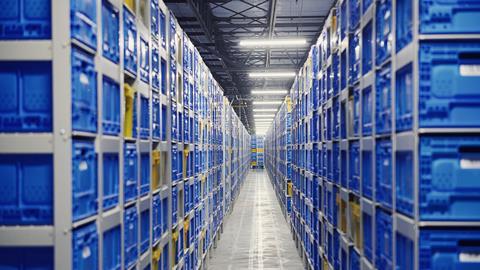
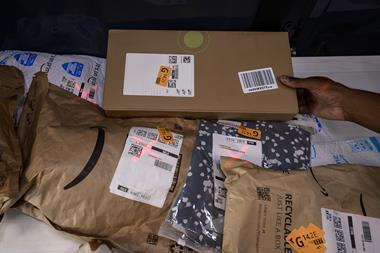
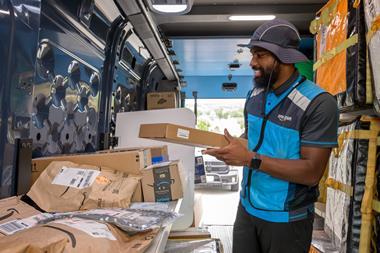




No comments yet